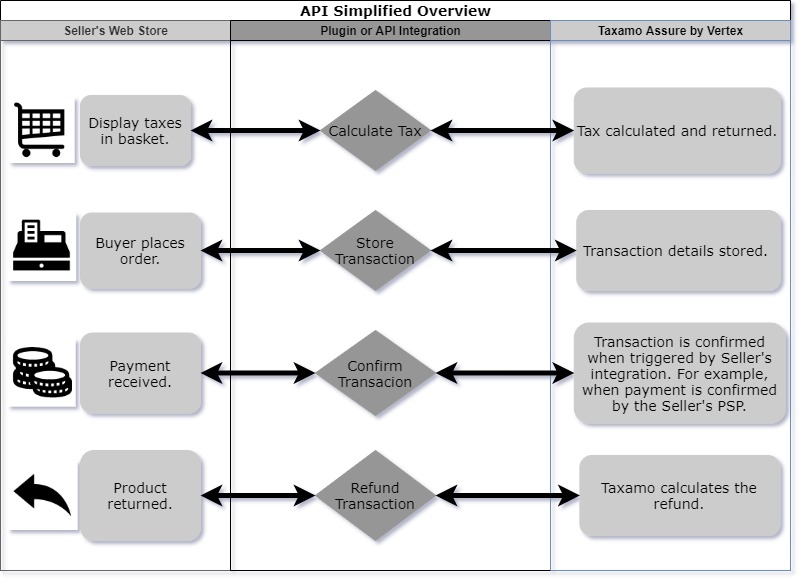API Overview
Read an overview of the API to help you understand how it is deployed and what its components are.
An Application Programming Interface (API) facilitates communication between the application and client applications.
Representational State Transfer (REST) is a type of API protocol. It is an architecture that governs how the API works. The service uses a REST-based API (sometimes called RESTful APIs) to help you to integrate your checkout processes with the service's features, as shown in the following graphic:

API Simplified Overview
The following graphic shows how the requests can be integrated with your checkout processes, in more detail:

Requests Overview
The API consists of 2 main components:
- Requests: Used to integrate Taxamo features with your checkout process. For more information about how this works, see Requests Reference Overview.
- JSON Objects: Used to model transaction and other details. You use these to send information to the API and it is sent back by the API in the same format. For more information about how this works, see JSON Objects Overview.
Deployment
To deploy the service, you sign up for the sandbox environment and then move to the production environment when you are ready. For more information, see Deployment Overview.
Configuration
After you access the environment, you use the components to integrate the service's features with your checkout processes. For more information about how to use the API, see Configuration Overview.
Updated over 3 years ago
